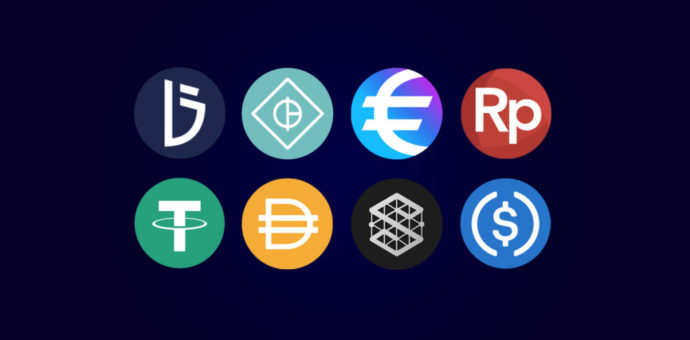By definition, stablecoin is a stable currency, a digital currency that combines the security of blockchain technology with the stability of fiat money. It is possible because stablecoins are usually pegged to fiat currencies, as in the case of the BRZ, pegged to the Brazilian real, or even other types of reserves, such as gold, silver, oil, artwork, and even the S&P500 index.
Browse the menu below to go directly to the desired snippet:
- What is stablecoin?
- What is the difference between stablecoin and CBDC?
- What are the types of stablecoins?
- What are the advantages of stablecoins?
- Where to buy stablecoins?
The use of reserve assets as collateral ensures the stability of stablecoins. Thus, they are an alternative to circumvent the volatility of other cryptocurrencies. In other words, those who have an asset that is going through price fluctuations can quickly exchange it for other digital assets whose prices remain stable.
On the other hand, this is not the only functionality of stablecoins. Briefly speaking, the advantage of these assets is that they are easier to acquire than traditional currencies such as euros or dollars, allow fast transfers to anywhere in the world without paying bank fees, and simplify investor access to decentralized finance (DeFi).
What is stablecoin?
As its name says, it is a stable currency, pegged to a physical asset’s value or a basket of assets. A digital currency can be backed by another cryptocurrency, a fiat currency, commodities, or precious metals, for example.
Besides BRZ, the cryptocurrency Tether (USDT) is an example of a stablecoin pegged to the US dollar. Thus, 1 USDT will always be worth US$ 1. Other examples of stablecoins are USD Coin, Dai, Binance USD, TrueUSD, and others.
What is the difference between stablecoin and CBDC?
Although a stablecoin is pegged to a tangible asset, it is not issued by a central bank. This is the difference between them and the Central Bank Digital Currencies (CBDCs). Thus, a CBDC is a stablecoin, but the reverse is not valid.
What are the types of stablecoins?
- Centralized stablecoin whose issuance is controlled by its creators. When they are not audited, it is not always possible to know whether the company has equivalent reserves corresponding to the asset to which the stablecoin is pegged. The main currency fitting this concept is the Theter.
- Crypto-collateralized stablecoins, i.e., pegged to another decentralized cryptocurrency, such as Ether (ETH). This is the case of Dai currency.
- Commodity-collateralized stablecoins is backed by assets such as precious metals or works of art.
- Stablecoins non-collateralized or without ballast. Its stability stems from algorithms that control the amount of assets in circulation.
What are the advantages of stablecoins?
The main advantage is to protect your capital. For example, in countries where the local currency is weak or depreciates against the dollar, stablecoins can be an alternative to prevent the user’s assets from suffering impact from frequent fluctuations. In addition, digital currencies allow fast transactions without the high costs usually charged by banking institutions.
Another benefit is the possibility of self-custody; that is, the user can store them in his own wallet. Imagine, for example, that a person decided to sell his cryptocurrencies but does not want to leave the money at the exchange or transfer it to his bank account. One solution is to convert the value into stablecoins. One highlight is that it is possible to transfer stablecoins between exchanges without converting them into fiat money.
In addition, stablecoins enable currency exchanges. Let’s use as an example the exchange of the Turkish lira by someone that is in Brazil. The individual would need first to exchange the real for the dollar and then go to the lira, paying for the costs of all intermediaries of these transactions.
Where to buy stablecoins?
To acquire currencies pegged to the dollar, you must have a dollar bank account, making it impossible for many Brazilians to operate. Thus, the alternative is to purchase through an exchange, using a fiat currency (real, dollar, euro) or other cryptocurrencies in exchange for the desired stablecoin







